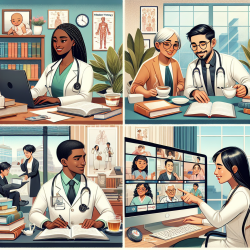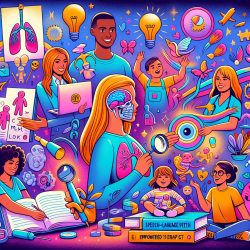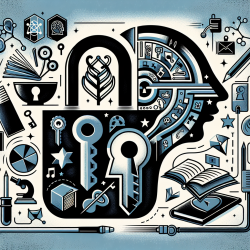As a Special Education Director with a vested interest in the continuous improvement of therapeutic services, particularly for students with hearing impairments, I am constantly on the lookout for research that can enhance the skills of practitioners within our school district. The use of cochlear implants in educational settings has grown significantly, offering profound opportunities for students with hearing loss to engage more fully in their learning environments. However, the success of these devices is heavily reliant on the effective implementation of therapy post-implantation. In this context, I recently delved into a comprehensive piece of research that sheds light on the potential pathways for improving outcomes for our students with cochlear implants.
The research in question explores various dimensions of therapy following cochlear implantation, including but not limited to, the optimization of device settings, auditory-verbal therapy techniques, and the integration of technological tools to facilitate language development. The outcomes of this research provide a rich tapestry of insights that can significantly impact the way we support our students with cochlear implants.
One of the key takeaways from the research is the critical importance of personalized therapy. Each student's experience with their cochlear implant is unique, and as such, therapy must be tailored to meet their individual needs. This might involve adjusting the cochlear implant's settings to suit their specific hearing profile or employing certain auditory-verbal therapy techniques that resonate most with the student.
Another significant insight is the value of incorporating technological tools into therapy. The research highlights several software programs and online platforms that can aid in the development of language and communication skills for students with cochlear implants. As a district that prides itself on embracing innovative solutions, these findings encourage us to explore new technologies that can complement traditional therapy methods.
Furthermore, the research emphasizes the importance of a multidisciplinary approach to therapy. Collaboration between audiologists, speech-language pathologists, educators, and families is paramount to ensure that therapy is holistic and encompasses all aspects of the student's development. This collaborative model is something our district has always championed, and the research reinforces its value in the context of cochlear implant therapy.
Implementing the outcomes of this research into our therapy practices requires a commitment to professional development and continuous learning. Encouraging our therapists and educators to engage with this research and participate in related training programs is a crucial step in this process. Additionally, fostering a culture of collaboration and open communication among the various professionals involved in a student's care will enhance the effectiveness of therapy.
In conclusion, the insights gleaned from this research article offer valuable pathways for improving therapy for students with cochlear implants. By personalizing therapy, leveraging technology, and fostering multidisciplinary collaboration, we can enhance the educational experiences and outcomes for these students. As we move forward, it is our responsibility to ensure that these insights are translated into practice, thereby enriching the support we provide to our students with cochlear implants.
For those interested in exploring this research further and understanding its implications in greater detail, I highly recommend reading the original research paper. To read the original research paper, please follow this link: Cochlear Implants.










